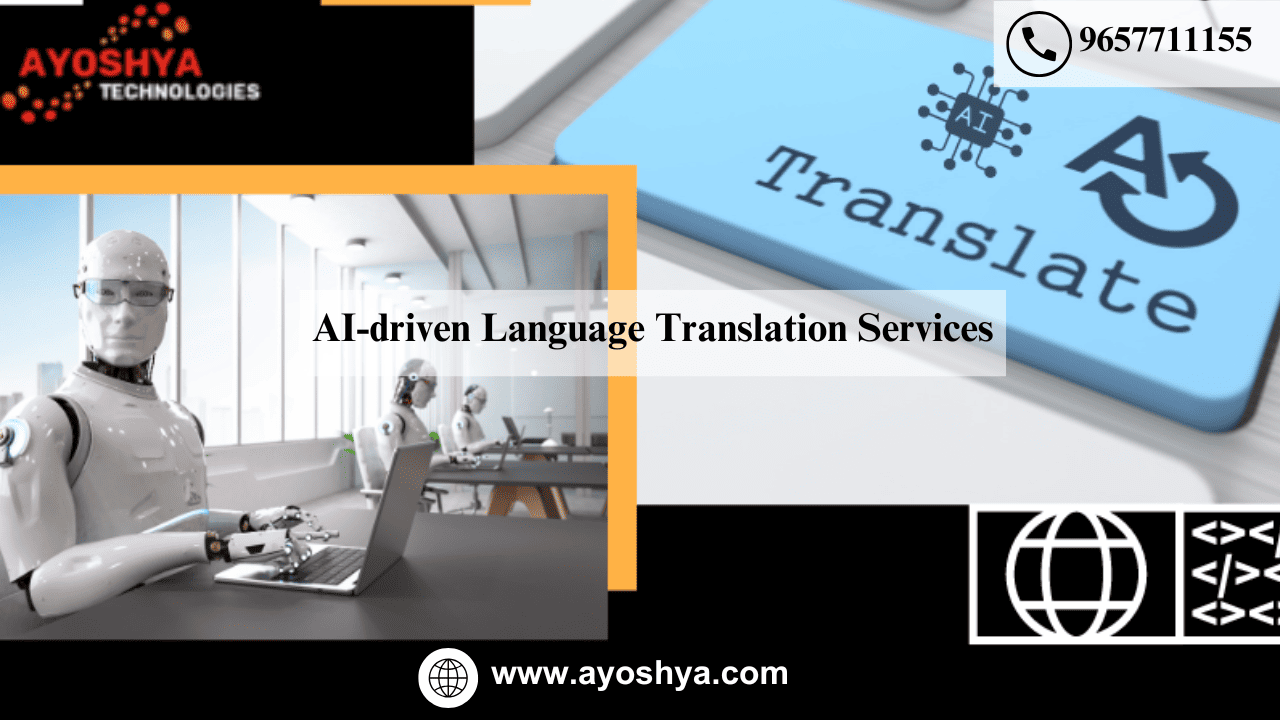Comparing AI-driven Language Translation Services
Comparing AI-driven Language Translation Services
- Accuracy: AI-driven services vary in translation accuracy; some excel in common languages, others in niche languages.
- Speed: Most offer instant translations, but processing time can differ for complex texts.
- Language Coverage: Varies widely; some services support 100+ languages, while others focus on major ones.
- Context Understanding: Some services better grasp context and idioms, leading to more natural translations.
- Cost: Pricing models differ; some provide free basic tiers, and others charge based on volume or features.
The Evolution of Language Translation Technology

Language translation technology has had a revolutionary journey, transitioning from reliance on manual dictionaries to leveraging the power of computers and, ultimately, the sophistication of Artificial Intelligence (AI) and machine learning.
This evolution has radically transformed the accuracy, efficiency, and accessibility of translation services.
From Manual to Mechanical: The earliest efforts in language translation involved manual dictionaries and the painstaking work of linguists and polyglots.
This phase was characterized by a significant reliance on human expertise and the physical labor of translating texts word by word.
The Dawn of Computer-Assisted Translation: The advent of computers introduced the first wave of technological assistance in translation.
The 1950s saw machine translation (MT) projects emerge, with initial attempts focused on rule-based systems that used linguistic rules and dictionaries coded into the system.
Despite their limitations in handling the nuances of human languages, these efforts marked a pivotal move towards automating the translation process.
The Rise of Statistical Machine Translation: By the late 20th century, the field shifted towards statistical models. Rather than relying solely on linguistic rules, these systems used vast corpora of bilingual text data to predict the most likely translation.
This approach significantly improved the fluidity and naturalness of translated text, but still struggled with idiomatic and context-specific language.
AI and Machine Learning Breakthroughs: The real game-changer came with introducing AI and machine learning technologies. Neural Machine Translation (NMT), a subset of AI, uses deep learning algorithms to translate text.
NMT systems learn to translate by analyzing and understanding patterns in large datasets of previously translated text. This allows them to handle nuances, idioms, and the contextual meaning of phrases far more effectively than their predecessors.
This era of translation technology has ushered in unprecedented accuracy and efficiency, closely mirroring human translators in some aspects of language understanding.
Key Players in AI-driven Language Translation

Several key players stand out in AI-driven language translation for their innovative use of technology, extensive language support, and unique features.
Google Translate: Perhaps the most widely recognized translation service, Google Translate supports over 100 languages at various levels. Utilizing advanced NMT technology offers features like offline translation, real-time conversation translation, and translation of images and handwritten text. Google’s continuous improvements in AI have significantly enhanced the service’s accuracy over the years.
Microsoft Translator: A strong competitor, Microsoft Translator also uses state-of-the-art NMT technology. It supports text translation in over 60 languages, real-time voice translation, multi-person conversation translation, and integration with various Microsoft products making it a versatile tool for personal and professional use.
DeepL : Renowned for its superior translation quality, DeepL Translator uses an advanced NMT model that has often outperformed other major translation services in accuracy and naturalness. Supporting fewer languages than Google or Microsoft, it focuses on European languages but impresses with its nuanced understanding of context and grammar.
Each of these services brings its strengths to the table. Google Translate’s vast language coverage and integration with other Google services make it incredibly accessible, while Microsoft Translator’s integration with Microsoft products enhances productivity and collaboration.
DeepL, with its focus on quality, offers an option for users where precision and nuance are paramount. Together, these platforms highlight AI’s remarkable progress in language translation, making cross-lingual communication more seamless and accessible than ever before.
Criteria for Comparing Translation Services

Several key factors should be considered when evaluating AI-driven language translation tools to determine which service best fits your needs.
The criteria for comparison generally include:
- Accuracy and Reliability: The core of a good translation service is its ability to convey the original message accurately without distortion. This involves directly translating words and correctly conveying tone, idioms, and cultural nuances.
- Speed and Efficiency: This measures how quickly the service can provide a translation after input. Speed is crucial for real-time applications such as conversation or live document translation.
- Supported Languages: The number of languages and dialects a service can translate is vital for users who work with less common languages or need to translate between non-English language pairs.
- Ease of Use and Interface: A user-friendly interface can significantly enhance productivity. This includes how intuitively one can access basic and advanced features.
- Integration and Compatibility: For professional settings, how well a translation tool integrates with other software (e.g., content management systems, productivity tools, or email services) can be a deciding factor.
- Cost: Pricing models vary widely among translation services, from free versions with basic features to subscription models with advanced functionalities. Understanding the cost relative to the service provided is essential for both individuals and organizations.
Each of these criteria plays a different role depending on the context in which the translation service is used. Professional translators may prioritize accuracy, reliability, and integration capabilities for workflow efficiency.
Casual users might prioritize speed, ease of use, and cost. Educational applications could balance language support, accuracy, and ease of use to accommodate diverse learning environments.
Comparative Analysis of AI-driven Translation Tools

In a comparative analysis of AI-driven translation tools like Google Translate, Microsoft Translator, and DeepL based on the criteria above, one might structure the evaluation as follows:
- Accuracy and Reliability: DeepL is often recognized for superior translation quality, particularly in European languages, showing a nuanced understanding of context. Google Translate and Microsoft Translator, while very accurate, may sometimes lag slightly behind DeepL in certain language pairs.
- Speed and Efficiency: Google Translate and Microsoft Translator are known for their quick processing times, making them suitable for real-time translation needs. DeepL offers efficient translation speeds but is often used for text where quality is more critical than immediate turnaround.
- Supported Languages: Google Translate leads with over 100 languages, followed by Microsoft Translator’s support for 60+ languages. DeepL, while offering fewer languages, focuses on delivering higher-quality translations in the languages it supports.
- Ease of Use and Interface: All three services offer user-friendly interfaces, with Google Translate often integrated into web browsers and other Google services for convenience. Microsoft Translator integrates well with other Microsoft products, and DeepL’s straightforward interface is appreciated for its simplicity and effectiveness.
- Integration and Compatibility: Microsoft Translator’s seamless integration with Microsoft Office and other Microsoft products makes it particularly valuable in professional settings. Google Translate’s API and web integration cater to a wide range of applications, while DeepL offers API access for developers.
- Cost: Google Translate offers a free service with paid options for more advanced features via its Cloud Translation API. Microsoft Translator is part of the Azure Cognitive Services suite, which operates on a subscription model. DeepL offers free subscription-based plans, providing access to enhanced features and higher usage limits.
This structured comparison shows how each service is measured across different criteria. Users should consider their specific translation needs, including the languages they work with most frequently, the contexts in which they use translations, and their budget, to select the most suitable tool.
Advancements and Future Prospects

AI-driven language translation has seen remarkable advancements, pushing the boundaries of how we communicate across language barriers.
Recent innovations have made real-time voice and context-aware translations not just ideals but realities.
These advancements enable smoother, more accurate conversations between speakers of different languages, significantly enhancing personal and business communications.
Recent Advancements:
- Real-Time Voice Translation: Tools like Google’s Interpreter mode and Skype’s real-time voice translation feature have revolutionized conversations by providing instant spoken language translation, making interactions seamless and natural.
- Context-Aware Translations: Advances in machine learning have enabled translation tools to better understand the context surrounding words and phrases, leading to more accurate translations. This includes recognizing idioms, cultural references, and the intended meaning based on the sentence structure and surrounding text.
Future Developments: The horizon of language translation technology is vast and promising. We anticipate:
- Enhanced Accuracy: With continuous improvements in machine learning models, future translations are expected to become even more accurate and indistinguishable from human translations.
- Broader Language Support: Efforts are ongoing to include more languages, especially those currently underrepresented in digital platforms, ensuring inclusivity and accessibility for all users.
- Seamless Integration: Future translation technology will likely be more deeply integrated into everyday devices and platforms, from wearables to social media, translating a seamless part of our digital interactions.
Challenges and Limitations

Despite significant advancements, AI-driven language translation services face challenges and limitations that impact their effectiveness.
Dealing with Complex Language Features:
- Idiomatic Expressions and Cultural Nuances: Translating idioms or expressions that don’t have direct equivalents in other languages remains a challenge. Cultural nuances and context play a significant role in translation, which AI sometimes struggles to fully grasp.
- Technical Jargon and Specialized Terminology: Translating specialized content, such as legal documents or technical manuals, requires not only language proficiency but also domain-specific knowledge, posing challenges for AI systems.
Ongoing Efforts to Overcome Challenges:
- Machine Learning and Deep Learning: Continued advancements in these areas enhance AI’s understanding of context, idioms, and specialized terminology, gradually overcoming these hurdles.
- Human-AI Collaboration: Incorporating human feedback and corrections into AI learning cycles helps improve accuracy and deal with nuanced language features more effectively.
- Cross-disciplinary Research: Collaboration between linguists, computer scientists, and subject matter experts is crucial in refining AI algorithms and expanding their capabilities to handle complex translation tasks.
The journey of AI-driven language translation is ongoing, with each advancement solving existing challenges and paving the way for new possibilities.
As technology evolves, so will our ability to communicate effortlessly and accurately across all languages, bringing the world closer together.
Top 10 Real-Life Use Cases for AI Translation Services
AI translation services have revolutionized various industries by breaking language barriers, enabling seamless communication, and fostering global collaboration.
Here are the top 10 real-life use cases:
- Global eCommerce:
- Industry: Retail
- Profession: eCommerce Managers
- Technology: Neural Machine Translation (NMT)
- Benefits: It allows businesses to sell products worldwide by translating product descriptions, customer reviews, and support material into multiple languages, thus expanding their market reach.
- Travel and Tourism:
- Industry: Hospitality
- Profession: Travel Agents, Tour Operators
- Technology: Real-Time Voice Translation
- Benefits: Enhances the travel experience by providing tourists with real-time translation of menus, signs, and conversations, making travel in foreign countries more accessible.
- Customer Support:
- Industry: Service
- Profession: Customer Service Representatives
- Technology: Chatbots and Automated Translation Tools
- Benefits: Enables companies to offer multilingual support round-the-clock, improving customer satisfaction and engagement.
- International Conferences and Events:
- Industry: Professional Services
- Profession: Event Organizers, Interpreters
- Technology: Simultaneous Translation Software
- Benefits: Facilitates real-time translation of speeches and presentations, allowing attendees from different linguistic backgrounds to participate fully.
- Healthcare Communication:
- Industry: Healthcare
- Profession: Doctors, Nurses, Medical Staff
- Technology: Medical Translation Tools
- Benefits: Improves patient care by translating medical documents, prescriptions, and patient instructions, ensuring clear communication regardless of language differences.
- Legal and Immigration Services:
- Industry: Legal
- Profession: Lawyers, Paralegals
- Technology: Document Translation Tools
- Benefits: Translates legal documents, applications, and correspondences accurately, facilitating smoother processes for international law and immigration cases.
- Financial Services:
- Industry: Finance
- Profession: Financial Analysts, Bankers
- Technology: Financial Document Translation
- Benefits: Enables global financial transactions and communication with international clients by translating reports, contracts, and advisories.
- Educational Resources:
- Industry: Education
- Profession: Educators, Students
- Technology: Textbook and Academic Paper Translation
- Benefits: Democratizes learning by making educational materials accessible in multiple languages, supporting students and researchers worldwide.
- Software and App Localization:
- Industry: Technology
- Profession: Software Developers, Product Managers
- Technology: Localization and Internationalization Platforms
- Benefits: Expands user base by adapting software products to different languages and cultures, enhancing usability and user experience.
- Content Creation and Media:
- Industry: Media and Entertainment
- Profession: Content Creators, Journalists
- Technology: Subtitling and Dubbing Tools
- Benefits: Increases content reach by translating movies, shows, articles, and social media content, making it accessible to a global audience.
These use cases illustrate the transformative impact of AI translation services across different sectors. They foster global interaction, enhance user experiences, and drive growth and inclusivity in an interconnected world.
FAQs
What factors affect the accuracy of AI-driven translation services?
The language pair being translated with common languages often yields better results and the complexity of the text, including specialized terminology or idioms.
How fast can I expect an AI-driven service to translate my text?
Instant translations are common, but larger or more complex texts might take slightly longer to process.
Do all AI translation services cover the same languages?
No, there’s significant variation. Some services support over 100 languages, while others focus on the most spoken ones.
How well do AI translation services understand context and idioms?
This varies; some are better at grasping context and idioms, leading to more natural translations.
What is the cost range for using AI-driven language translation services?
Pricing models vary widely. Some services offer a free basic tier, while others charge based on the amount of text translated or additional features.
Can AI translation services handle slang and colloquial expressions?
Some services are better equipped to handle slang, but it can be challenging for AI to interpret all nuances accurately.
How do updates and improvements affect AI translation services?
Continuous updates improve translation quality, adding new languages and refining context understanding.
Is there a difference in translation quality between text and spoken word?
Yes, spoken word translation might face additional challenges like accents and background noise, which can affect accuracy.
How secure are AI translation services?
Security varies; most reputable services offer strong data protection, but checking their privacy policies is important.
Can I customize AI translation services for my specific industry?
Some services allow customization, especially for technical or industry-specific terminology.
What role does machine learning play in AI translation?
Machine learning is central, enabling services to learn from vast data and improve over time.
How does AI translation impact global communication?
It significantly lowers language barriers, making communicating across cultures easier for people and businesses.
Are there any languages that AI translation services struggle with?
Languages with fewer speakers or limited available data can challenge AI translations.
How do I choose the right AI translation service for my needs?
Consider factors like language coverage, cost, and specific features like real-time translation or industry specialization.
What future developments can we expect in AI-driven translation?
Ongoing AI and machine learning advancements will likely lead to more accurate and nuanced translations, even in less commonly spoken languages.



